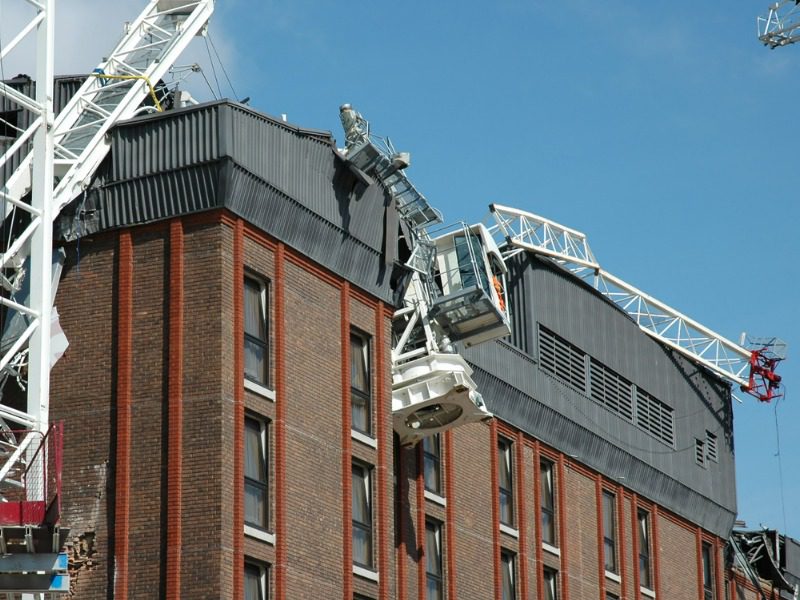Who’s responsible when construction projects go wrong

Construction project delays can expose commercial insurers to significant claims costs.
Canada’s property and casualty insurance market collected more than $748 million in direct written premiums for surety bonds in 2022, per Canada’s solvency regulator, the Office of the Superintendent of Financial Institutions. These bonds are designed to guarantee the satisfactory completion of construction projects by a contractor. In that same year, Canadian surety bond-holders made claims for just over $197 million.
So, who’s liable for these claims when a project goes awry?
The building codes say…
All building codes, including the Ontario Building Code (OBC), are a set of minimum requirements to ensure buildings are safe in terms of public health, fire protection, accessibility and structural adequacy.
In Ontario, the 1992 Building Code Act (BCA) regulates the OBC. It states everyone who “causes a building to be constructed” plays a role in ensuring that happens in accordance with terms and conditions laid out in the BCA, the OBC, and with any permits issued for the building. So building safety is a shared responsibility between designers, builders, building officials and owners.
The BCA establishes the importance of adhering to building permits and states: “No person shall construct or demolish a building or cause a building to be constructed or demolished unless a permit has been issued therefor by the chief building official.”
Later, it adds, “No person shall make a material change or cause a material change to be made to a plan, specification, document, or other information on the basis of which a permit was issued without notifying, filing details with, and obtaining the authorization of the chief building official.”
Generally, alterations or restorations to existing structures requiring a building permit are material changes to structures under construction. Renovations — adding windows or washrooms, or creating walk-out basements — require the property owner to obtain permits for structural work, plumbing, heating, ventilation and air conditioning.
However, new or revised building permits aren’t required to change interior finishes or install new roofing shingles.
Design requirements
Designers must provide plans based on BCA and OBC requirements. Designs must be detailed enough to be assessed for compliance with those regulations. The building must be constructed in accordance with the design intent, the BCA and the OBC. Designers must provide designs and conduct general reviews of construction, but only for the aspects for which they’re qualified.
A general review of construction documents deviations between the actual construction and the original design, as well as OBC requirements. These reviews help minimize the risk of construction deficiencies and failures. What’s more, suppliers for systems and materials, such as prefabricated structures and roofing assemblies, usually require general reviews of construction before issuing product warranties.
Ontario’s Professional Engineers Act sets performance standards for engineers making general reviews of construction. Reviewing engineers must make periodic site visits to ensure work conforms with building plans and specifications. General reviews don’t mean constant supervision or comprehensive inspections. They’re periodic reviews of representative random samples of work within a project during which engineers must exercise professional judgment to determine what aspects of the work need to be sampled at any given construction stage.
Reviewers should ensure contractors are on site to examine critical elements that will be concealed within the structure as work progresses. Because reviewing engineers visit sites intermittently, regulatory guidelines advise engineers not to imply a guarantee of the work by making statements that certify construction is in conformity — as opposed to general conformity — with the design documents. Such statements entail a much higher liability risk.
Builder obligations
The BCA also obliges builders to ensure construction does not proceed without required building permits, and that construction follows approved drawings. Builders must use construction techniques that comply with the BCA and OBA. They must also notify both designers and building officials when site conditions impede compliance.
Responsibility for worker site safety also falls to builders. And, while builders are generally thought to be contractors who construct the project, under certain circumstances, owners can be the builders/constructors.
Under the 1990 Occupational Health and Safety Act (OHSA), each project assigns one person overall authority and responsibility for health and safety. This ‘constructor of the project,’ is defined by OHSA as “a person who undertakes a project for an owner and includes an owner who undertakes all or part of a project by himself or by more than one employer.” An ‘employer’ includes contractors and subcontractors who perform work or supply services.
When a building owner undertakes a project by directly hiring separate contractors working simultaneously, and not in succession, the owner becomes the constructor under OHSA. In these situations, owners don’t retain a general contractor to coordinate and oversee the separate contractors’ work. An owner may also be deemed a general contractor, per a 2023 Supreme Court of Canada ruling.
Official duties
The law requires building officials to review design plans, inspect construction and, when necessary, issue orders to building owners to ensure construction complies with the BCA and OBA.
Building inspectors must identify deviations or changes from the permit plans and ensure revised building permits are issued for material changes. However, building inspectors don’t have to continuously monitor construction. During staged inspections, they must find defects through visual inspection and order those defects remedied.
Chief building officials (CBOs), meanwhile oversee BCA and OBA enforcement within their jurisdictions. Building officials, including inspectors, don’t review and aren’t responsible for technical design aspects and may rely on the designers’ professional expertise.
Among the CBO’s most important powers is to issue a ‘stop work order,’ which under the BCA cannot be issued unless one of three orders — an order to comply, an order not to cover, or an order to uncover — was issued and was not complied with during construction within a certain period.
Both a CBO and a building inspector can issue any of those three preliminary orders, but only the CBO may issue a stop work order.
Dr. Yasser Korany is a consulting forensic engineer, construction litigation expert and principal of KSI Engineering. This article is excerpted from one appearing in the February-March 2024 print edition of Canadian Underwriter. Feature image courtesy of iStock.com/andymagic


